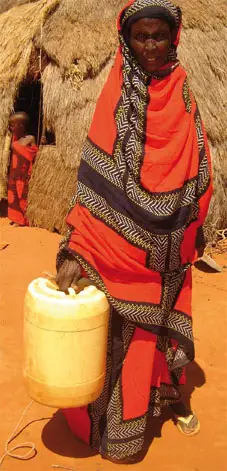African Disaster
African Disaster – Scorched landscapes, withered crops, dried-up rivers and lakes; or the opposite – devastating floods; dying livestock, hungry people. This could be the picture we face in Africa in a decade unless we manage climate risks better.
New research suggests that the vulnerability to the climate-change threat is in Africa greater than in many parts of the world. And the changes won’t be limited to a rising average temperature and changing rainfall patterns. Droughts and floods are happening with increasing severity and frequency, accompanied by diseases such as diarrhoea. Malaria is also making an appearance at altitudes that previously had no mosquitoes, such as in the mid-highlands in Ethiopia and Rift Valley Fever has reappeared.  Changing weather patterns in recent years are having a detrimental impact on food security; farmers are finding they can no longer plant or harvest their crops as they used to for centuries as rainfall is late or erratic.
Changing weather patterns in recent years are having a detrimental impact on food security; farmers are finding they can no longer plant or harvest their crops as they used to for centuries as rainfall is late or erratic.
Communities are vulnerable to unfamiliar hazards and cannot cope with even minor shocks – leading to a constant rise in the numbers of people needing humanitarian assistance. The average number of food emergencies in Africa per year has almost tripled since the mid-1980s, and in the last year alone 25 million people faced a food crisis.
The African disaster, with its resources already overstretched, has little capacity to deal with further traumas from climate change. Around 90% of people depend on agriculture for their livelihoods – many are subsistence farmers who only grow enough food to feed themselves and their families. Any decrease or change in rainfall patterns could mean crop failure and consequently serious food shortages or even famine.
Agricultural production will be severely impacted by climate change – the area suitable for agriculture, growing seasons and yield are all expected to decrease. This would further adversely affect food security and exacerbate malnutrition in some countries.
The yield from rain-fed agriculture could be reduced by up to 50% by 2020, according to scientists on the Intergovernmental Panel on Climate Change (IPCC). Many parts of Africa are already considered “water stressed” – something that will be exacerbated by climate change.
Any significant rise in temperature could also seriously affect cash crops such as tea or coffee. Arid and semi-arid areas all over Africa are becoming yet drier. On average the continent is 0.5 °C warmer than it was 100 years ago, in some parts even more.
Migration is another outcome of climate change as people move away from drought-prone areas and work as labourers on other farms to earn money to buy food, increasing pressure on particular parts of the continent.
The African disaster is easily seen in Ethiopia and Rwanda which are increasingly vulnerable to the impact of climate change. Also see the page on Somalia.
Further information and updates on Red Cross programs can be obtained by visiting their Climate Centre website.
Extracted from: Red Cross/Red Crescent Climate Guide, November 2007.
